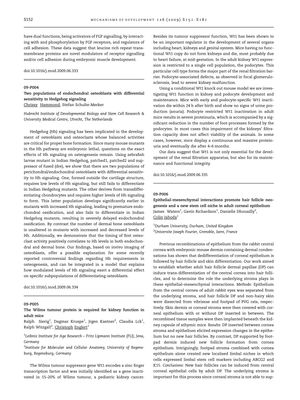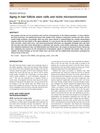Epithelial-Mesenchymal Interactions Promote Hair Follicle Neogenesis and a New Stem Cell Niche in Adult Corneal Epithelium
August 2009
in “
Mechanisms of Development
”

TLDR Adult hair follicle cells can create new hair follicles from corneal cells with the right support.
The document reports on a study that aimed to determine if adult hair follicle dermal papillae (DP) can induce trans-differentiation of central corneal epithelium into hair follicles and to understand the role of the underlying stroma in these epithelial-mesenchymal interactions. The study involved separating the epithelium from the central cornea of adult rabbit eyes and combining it with DP and non-hairy skin dissected from rats. These recombined tissue samples were then implanted beneath the kidney capsule of athymic mice. The results showed that while DP inserted between cornea stroma and epithelium elicited expression changes in the epithelium, it did not lead to new hair follicle formation. However, when DP was supported by footpad dermis, it successfully induced new follicle formation from cornea epithelium. Additionally, footpad stroma combined with cornea epithelium alone created new localized limbal niches where cells expressed limbal stem cell markers. The study concluded that adult DP can induce new hair follicles from central corneal epithelial cells and that the underlying stroma plays a crucial role in this process, with non-hairy skin dermis able to support follicle neogenesis, while corneal stroma cannot. The central cornea, which is deficient in stem cells, can create new stem cell compartments or niches in long-term recombinations.


